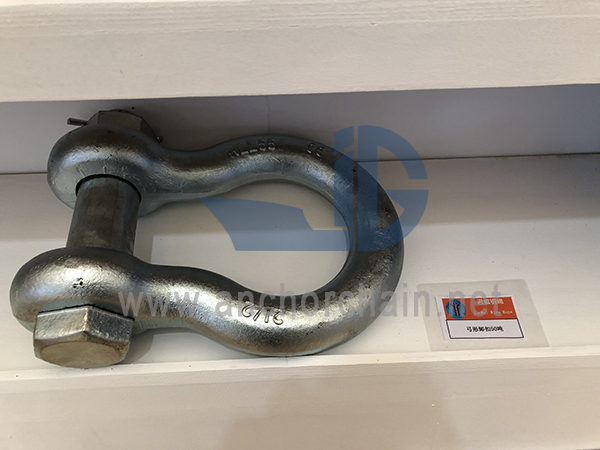Mastering the Art of Securing and Releasing a Bow Shackle: Best Practices for Various Applications
2024-07-03
Bow shackles are versatile tools essential for secure connections in lifting, rigging, and various industrial applications. Properly securing and releasing a bow shackle is crucial for ensuring safety, efficiency, and longevity of equipment. In this blog, we'll delve into the proper methods for securing and releasing a bow shackle across different applications, providing practical insights to maximize effectiveness.
Understanding Bow Shackles
Bow shackles consist of a curved, bow-shaped body with a removable pin or bolt closure. They are designed to handle heavy loads and provide a secure attachment point for lifting slings, ropes, chains, and other rigging components. Available in various sizes and materials, bow shackles offer flexibility and reliability in diverse industrial settings.
Securing a Bow Shackle
1. Choosing the Right Shackle
Select a bow shackle that meets the specific requirements of your application, considering factors such as load capacity, material compatibility, and environmental conditions. Ensure that the working load limit (WLL) of the shackle exceeds the expected load to maintain safety margins.
2. Preparation and Inspection
Before use, inspect the bow shackle for any signs of wear, damage, or corrosion. Ensure that the pin or bolt closure is securely fastened and properly aligned with the shackle body. Clean the shackle and ensure that all components are free from dirt or debris that could affect performance.
3. Alignment and Attachment
Align the bow shackle with the load or attachment point to minimize side-loading, which can reduce the shackle's strength. Insert the pin or bolt through the shackle holes and ensure it is fully engaged and secured with the appropriate torque. Use a wrench or tool as needed to tighten the closure securely.
4. Load Distribution
Ensure that the load is evenly distributed across the bow of the shackle. Avoid overloading or placing excessive stress on one side of the shackle, which can compromise its integrity. Use rigging techniques such as equalizing loads with multiple shackles or using spreader bars to maintain balance and safety.
Releasing a Bow Shackle
1. Preparation
Before releasing the bow shackle, ensure that the load is safely supported or transferred to another secure attachment point. If necessary, use blocking or cribbing to prevent sudden movement or shifting of the load during the release process.
2. Loosening the Closure
Use a suitable tool or wrench to loosen the pin or bolt closure of the bow shackle. Turn the closure counterclockwise to release tension gradually. Avoid excessive force or sudden movements that could cause the closure to jam or become difficult to remove.
3. Removing the Pin or Bolt
Once loosened, carefully remove the pin or bolt from the shackle holes. Hold the pin securely to prevent dropping or misplacement. Ensure that the pin or bolt is fully removed before detaching the shackle from the load or attachment point.
4. Safely Disengaging
After removing the pin or bolt, disengage the bow shackle from the load or attachment point in a controlled manner. Avoid sudden movements or jerks that could cause the shackle to swing or rotate unpredictably. Secure the shackle and pin/bolt for safekeeping or future use.
Applications and Considerations
- Lifting and Rigging: Secure bow shackles are crucial for connecting lifting slings, cables, and chains in construction, manufacturing, and marine industries.
- Off-Road and Recovery: Use bow shackles for attaching recovery straps and winch lines in off-road vehicle recovery operations.
- Industrial Maintenance: Employ bow shackles for machinery installation, equipment maintenance, and material handling tasks.
Conclusion
Mastering the proper method for securing and releasing a bow shackle is essential for ensuring safety, efficiency, and reliability in various industrial and recreational applications. By following best practices such as proper inspection, alignment, load distribution, and controlled release, users can maximize the effectiveness of bow shackles while minimizing risks of accidents or equipment damage. Prioritize safety and adherence to manufacturer guidelines to achieve optimal performance and longevity of bow shackles in your operations.



